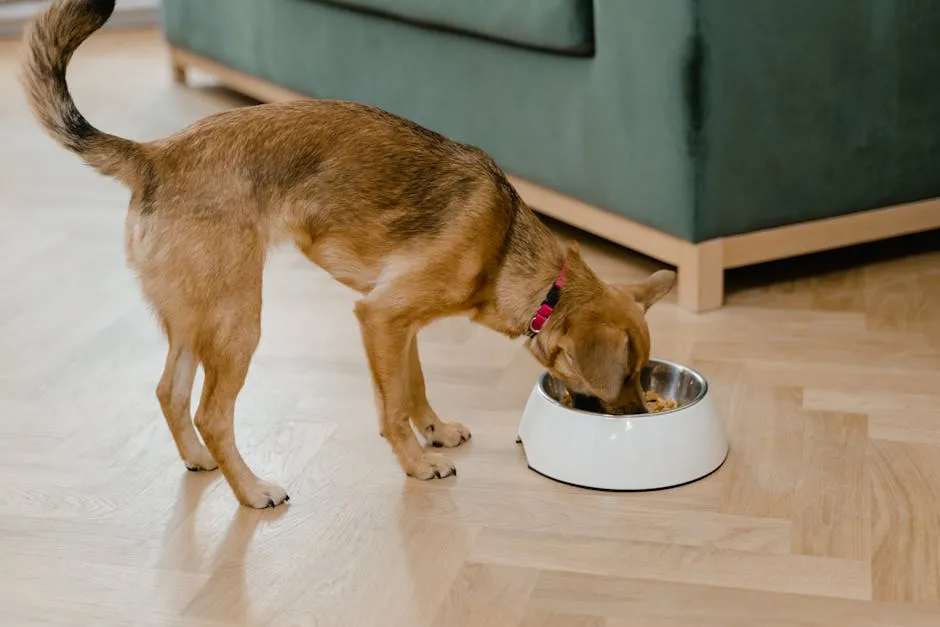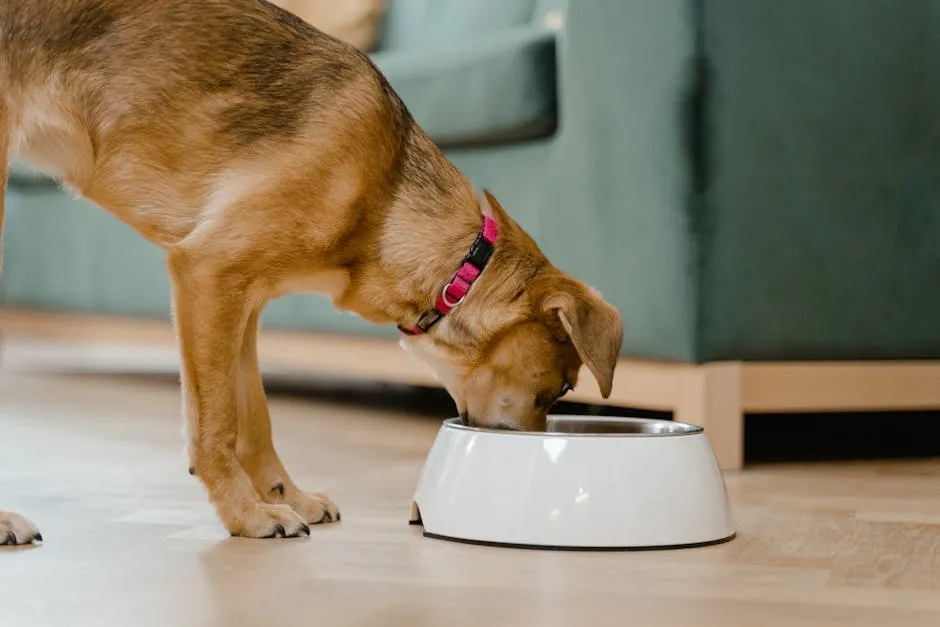Introduction
Are you curious about fresh feeding for dogs? This method is gaining traction among pet owners. Instead of relying on traditional kibble, many are choosing fresh, whole foods. Fresh feeding emphasizes real ingredients that nourish our furry friends. Let’s uncover the benefits, methods, and what you need to consider before making the switch.
Summary and Overview
Fresh feeding is all about providing dogs with nutritious meals made from fresh ingredients. This approach is vital for maintaining your dog’s overall health. Fresh dog food can be homemade, purchased from brands, or consist of raw diets. Each option has its unique features and benefits.
Homemade meals allow you to control ingredients, ensuring your dog gets high-quality nutrition. Commercially available fresh foods are convenient and often crafted by nutritionists. Raw diets aim to replicate a dog’s ancestral eating habits, focusing on uncooked meats and vegetables.
Health benefits associated with fresh feeding include improved digestion, a shinier coat, and increased energy levels. However, it’s crucial to consult your veterinarian before altering your dog’s diet to ensure it meets their specific needs.

What is Fresh Feeding?
Definition and Scope
Fresh feeding refers to providing dogs with meals made from unprocessed, whole ingredients. It includes three main categories: homemade meals, commercially prepared fresh foods, and raw diets. Unlike traditional kibble, which often contains fillers and preservatives, fresh dog food typically consists of natural ingredients like meats, vegetables, and grains.
Common ingredients found in fresh dog food include lean proteins such as chicken, beef, or fish, alongside nutritious vegetables like carrots and spinach. Additionally, grains like brown rice can offer healthy carbohydrates. The nutritional benefits of fresh feeding are significant. Studies indicate that dogs fed fresh diets tend to experience better digestion and improved nutrient absorption.
The fresh dog food market is rapidly growing, with a reported increase in sales by over 20% in recent years. More pet owners are recognizing the advantages of fresh feeding. If you’re considering a fresh diet for your dog, take the time to evaluate their individual dietary needs. Consulting with a veterinarian can help ensure your dog’s nutritional requirements are met while making the switch.

Benefits of Fresh Feeding
Health Improvements
Switching to fresh feeding can greatly benefit your dog’s health. Numerous studies and expert opinions support the advantages of this approach. One significant benefit is enhanced nutrient absorption. Fresh foods retain their natural vitamins and minerals, which often get lost in processed diets. This means your dog can absorb more goodness from their meals.
Improved digestive health is another key advantage of fresh feeding. Fresh foods are easier to digest compared to dry kibble. Many pet owners report firmer stools and less digestive upset after transitioning their dogs to fresh diets. This can lead to a happier, healthier gut for your furry friend.
The impact on skin and coat health is noteworthy too. Fresh feeding provides high-quality protein and essential fatty acids. These nutrients can lead to shinier coats and healthier skin. Dogs often experience fewer skin irritations and allergies when they consume fresh foods.

To ensure your dog enjoys a shiny coat, consider adding Omega-3 Fish Oil for Dogs to their diet. This supplement is known for its ability to improve coat health and reduce inflammation, ensuring your pooch looks and feels fantastic.
Weight management becomes more manageable with fresh feeding as well. A balanced, fresh diet helps maintain a healthy weight. Many fresh meals have lower calorie densities, meaning dogs feel full without overeating. This can be particularly beneficial for dogs prone to obesity.
Interestingly, studies have shown that dogs on fresh diets live longer. Research from the University of California, Davis indicates that dogs fed fresh food lived an average of 13.1 years compared to 10.4 years for those on commercial diets. This statistic highlights the potential long-term benefits of fresh feeding.
If you decide to switch to a fresh food diet, consider tracking your dog’s health changes. Monitoring their energy levels, coat condition, and overall well-being can help you see the positive effects of this dietary change.
For a deeper understanding of the benefits of fresh feeding, check out this article on fresh feeding dogs.

Popular Fresh Dog Food Brands
Overview of Leading Brands
As the fresh feeding trend grows, several brands stand out in the market. Here’s a brief overview of some popular fresh dog food brands and their features.
The Farmer’s Dog offers fresh meals tailored to your dog’s needs. Their recipes include ingredients like turkey, beef, and pork. They provide customizable delivery schedules, making it convenient for busy pet owners. Starting prices are around $2 per day, which is quite reasonable. Check them out here!
Nom Nom is another top contender. Their meals are made with high-quality proteins and vegetables. Price-wise, you can expect to pay about $3 per day. They also offer a money-back guarantee, ensuring customer satisfaction. Want to give it a try? Click here!
Ollie focuses on delivering fresh meals that meet nutritional standards. They have a variety of recipes, including chicken and beef. Their pricing starts at less than $2 per day, making them an affordable option. Plus, Ollie has received positive reviews from pet owners for its meal quality. Explore Ollie’s offerings here.
Spot & Tango offers fresh food in a variety of recipes, including lamb and turkey. Their meals are designed to be both nutritious and delicious. Starting at $7 per week, they provide a good balance of quality and price. You can check them out here.
Many of these brands offer subscription services, allowing you to customize delivery frequencies. Customer testimonials often highlight improved health and satisfaction in their pets after switching to fresh food.

The fresh dog food market is expanding rapidly, with brands like Freshpet also gaining traction. Sales for these brands have soared, reflecting the growing demand for fresh options.
Choosing the right brand depends on your dog’s specific needs and preferences. Explore different options and consider your dog’s dietary requirements when selecting a fresh food brand.

Transitioning to Fresh Feeding
How to Make the Switch
Thinking about switching your dog to a fresh food diet? You’re not alone! Many pet parents are making this change for better nutrition. But how do you safely transition your pup? Here’s a simple guide to help you through the process.
Start with a gradual transition. Mixing the fresh food with your dog’s current diet is key. For the first few days, mix 20% fresh food with 80% of their regular food. Each day, increase the fresh food portion while decreasing the old food. Aim for a full transition over 7 to 10 days. This slow process helps prevent digestive issues.
Watch your dog closely during this transition. Monitor their health and energy levels. If your dog shows signs of digestive upset, like diarrhea or vomiting, slow down and revert to the previous mix. It’s essential to adjust portions according to their needs. Every dog is different, and some may require more or less food.
Be aware of common pitfalls. One major mistake is switching too quickly. This can cause digestive distress. Also, ensure you’re providing a balanced diet. Fresh food should include proteins, vegetables, and healthy fats. It’s wise to consult your veterinarian for personalized advice. They can help you determine the right portions and ingredients for your dog.
Interestingly, statistics show that nearly 30% of dogs may experience digestive issues when changing diets. So, taking your time is crucial! By following these steps, you can make the transition smoother for your furry friend.

Fresh Feeding Recipes and Ideas
Easy Home-Cooked Dog Food Recipes
Ready to whip up some delicious meals for your dog? Here are a few easy recipes that meet their nutritional needs while being fun to prepare. Cooking for dogs can be simple and rewarding!
1. Chicken and Rice Delight
Ingredients:
- 1 cup of brown rice
- 1 pound of ground chicken
- 1 cup of carrots, chopped
- 1 cup of peas, frozen or fresh
Instructions:
- Cook the rice according to package instructions.
- In a pan, cook the ground chicken until no longer pink.
- Add the carrots and peas to the chicken, cooking for another 5 minutes.
- Mix the chicken mixture with the rice.
This meal is packed with protein and fiber. It’s great for digestion and overall health!

2. Beef and Sweet Potato Stew
Ingredients:
- 1 pound of lean ground beef
- 1 sweet potato, diced
- 1 cup of green beans, chopped
- 1 cup of beef broth (low sodium)
Instructions:
- In a pot, brown the ground beef over medium heat.
- Add the sweet potato and green beans.
- Pour in the beef broth and simmer until the sweet potato is tender.
This stew is rich in vitamins and minerals, making it a hearty option for your pup.

3. Salmon and Spinach Bowl
Ingredients:
- 1 can of salmon (in water, drained)
- 1 cup of spinach, chopped
- 1/2 cup of quinoa
- 1 tablespoon of olive oil
Instructions:
- Cook the quinoa according to package instructions.
- In a bowl, mix the salmon, spinach, and olive oil.
- Serve the salmon mixture over the quinoa.
This recipe is loaded with omega-3 fatty acids for a shiny coat!
Ingredient Substitutions
If your dog has dietary restrictions, feel free to swap ingredients. For example, turkey can replace chicken, and broccoli can stand in for green beans. Always ensure the substitutions are safe for dogs.

Preparation and Storage Tips
Once you prepare these meals, proper storage is essential. Keep the food in airtight containers in the fridge for up to 3 days. You can also freeze portions for later use. Just thaw overnight in the fridge before serving.
Share Your Recipes!
Now that you have some tasty recipes, why not share your own? We would love to hear your experiences with home-cooked meals for dogs. Let’s create a community of fresh feeding enthusiasts!

Addressing Common Concerns
Safety and Nutritional Considerations
Switching to fresh feeding can raise a few concerns. Food safety and nutritional balance are often at the forefront. One primary worry is the risk of raw feeding. Raw diets may expose dogs to harmful bacteria, like Salmonella and E. coli. According to the Centers for Disease Control and Prevention, raw pet food diets are linked to a significant number of foodborne illnesses. These risks emphasize the need for careful handling and preparation.
Consulting with a veterinarian is essential before making any dietary changes. Your vet can help tailor a fresh feeding plan that fits your dog’s unique needs. They can also address any potential health issues your dog may face with a new diet.
Nutritional balance is another critical aspect. Fresh feeding must meet all of your dog’s dietary requirements. A diet lacking in essential nutrients can lead to deficiencies over time. For example, dogs need a mix of proteins, carbohydrates, fats, vitamins, and minerals. Relying solely on fresh food may not provide this balance unless well-planned.
To avoid nutritional gaps, consider incorporating a variety of ingredients. Use lean meats, vegetables, and healthy fats. Always ensure that your recipes align with veterinary guidelines. If you want to ensure that your dog is getting a balanced diet, consider reading Books on Dog Nutrition for more insights!
In summary, while fresh feeding can enhance your dog’s health, prioritize food safety and nutritional balance. Always seek professional guidance on your dog’s diet to ensure they receive the best possible nutrition.

Conclusion
In conclusion, fresh feeding offers numerous benefits for canine health and well-being. It emphasizes whole, nutritious foods that can lead to improved digestion, coat quality, and overall vitality. However, it’s crucial to address safety and nutritional considerations. Always consult with veterinary professionals to make informed decisions about your dog’s diet. By doing so, you can ensure your furry friend enjoys a healthy and fulfilling life.
FAQs
What is fresh feeding for dogs?
Fresh feeding for dogs involves providing meals made from whole, unprocessed ingredients. This approach contrasts with traditional kibble, which often contains fillers and preservatives. Fresh dog food emphasizes real, nutritious ingredients like meats, vegetables, and grains. Many pet owners choose fresh feeding to improve their dogs’ overall health and vitality.
Is fresh dog food better than kibble?
Fresh dog food has several advantages over kibble. It typically contains fewer preservatives and more nutritious ingredients. Many dogs experience improved digestion and energy levels on fresh diets. However, fresh food can be more expensive and requires refrigeration. Kibble, on the other hand, is convenient and shelf-stable, but some brands may lack quality ingredients. Ultimately, the best option depends on your dog’s specific needs and preferences.
How do I transition my dog to a fresh food diet?
Transitioning your dog to a fresh food diet should be gradual. Start by mixing 20% fresh food with 80% of their current diet for a few days. Gradually increase the fresh food percentage while decreasing the old food over 7 to 10 days. Monitor your dog for any digestive issues during this process. If problems arise, slow down the transition and adjust accordingly.
Are there risks associated with raw feeding?
Yes, raw feeding can pose health risks. Raw diets may expose dogs to harmful bacteria, such as Salmonella or E. coli. These risks are particularly concerning for households with young children or immunocompromised individuals. It’s crucial to practice safe handling and preparation methods. Consulting with a veterinarian can help you understand the risks and benefits of raw feeding.
What are some recommended fresh feeding recipes?
Here are a few simple recipes to try: – Chicken and Rice Delight: Cooked chicken, brown rice, and carrots. – Beef and Sweet Potato Stew: Lean ground beef, sweet potatoes, and green beans. – Salmon and Spinach Bowl: Canned salmon, quinoa, and spinach. For more detailed recipes, check out the full recipe section!
Can I mix fresh food with kibble?
Yes, mixing fresh food with kibble can be beneficial. This approach adds variety and nutrition to your dog’s diet. Start by adding a small portion of fresh food to their kibble. Ensure that the total amount of food is balanced to avoid overfeeding. This combination can help transition your dog to a fresh diet while still providing the convenience of kibble.
How can I ensure my dog gets a balanced diet with fresh food?
To ensure a balanced diet, consult your veterinarian. They can help you create a meal plan that meets your dog’s nutritional needs. Incorporate a variety of proteins, vegetables, and healthy fats into your dog’s meals. Regularly monitor your dog’s health and adjust their diet as needed to maintain balance and overall well-being.
Please let us know what you think about our content by leaving a comment down below!
Thank you for reading till here 🙂
All images from Pexels





